Hello Friend – WAIT – Whose Team Are You On Anyway?
It’s easy to recognize this friend as an adult. A ladybug rests upon Peperomia. Photo © Michaela at TGE
Hello friend… or foe? In all of life it’s important to know your friends from your enemies, but as gardeners this issue is especially important. We are conditioned to think of bugs as destructive, ‘icky’ and ‘bad’. Of course this isn’t always the case. Hardly. In fact, some bugs are easy to like – especially if they are beautiful. Butterflies and moths easily charm us with their colorful patterns as they dance on the breeze, and dragonflies delight us with their bright colors and aerobatic maneuvers. Honeybees seduce us with their sweet nectar, and their bumbling cousins are equally charming as they buzz about the garden. Perhaps the most famous of all, pretty red and black ladybugs have become the pin-up girls of the beneficial insect world. In fact right now, as I type this sentence, hundreds of these helpful creatures are emerging from hibernation in my house, covering my houseplants like a smattering of little red polka-dots.
But what about the other “good” bugs? Would you know a beneficial insect if you saw one? It’s certainly been a long time since my last entomology class, and I admit that I am a bit rusty. Although I can easily recognize most garden pests, and I know how to combat them, I am not always spot-on with my identifications. Part of the difficulty lies in the nature of insect metamorphosis. What? Yes, that’s right: metamorphosis. Remember that from school? And no, I’m not talking about Franz Kafka’s famous novella, (although that is one of my all time favorite, freaky-works of fiction). Most of us become familiar with the process of metamorphosis in elementary school, when butterfly caterpillars, (particularly Monarch and Swallowtail), are collected in containers during science class. Kids of all ages love to watch as a mature butterfly emerges, transformed after weeks inside a moody, magical chrysalis. All insects live out their lives in stages, and it’s important for a gardener to know how they look in their ‘baby’, (larval, nymph, pupa), phases as well as in their mature form.
Most experienced gardeners will recognize the black and orange ‘monster’, (pictured below), as a ladybug, (or ladybird beetle, also known as Coccinella septempunctata), in its larval stage. In one of the more dramatic insect transformations, this freakish-looking creature morphs into the cute little red and black beetle we all know and love. If you have never  seen one before, do get to know this chameleon, for it is your dear, dear friend. The ladybug is a garden hero, and it does an extraordinary amount of work before it even reaches adulthood. Aphids; mites; scale: these garden pests are the ladybug’s favorite foods. In fact, a single ladybug can consume thousands of destructive aphids, mites and other insects within its lifetime. Would you have killed this creature, (pictured below), if you saw it in your garden? Many do. Sometimes the ladybug larvae is mistaken for a pest, and other times it is accidentally wiped out with an application of insecticide intended for the very aphids it is actually consuming, (warning: many organic pesticides can kill beneficials, especially in the larval stage)…
But would you recognize it as a baby? (An immature lady bug feasting upon aphids. Photo: Vejezus via Wikimedia Commons)
The first step toward becoming a responsible, organic gardener is to recognize the natural things living around you, and to learn about the role they play in the ecosystem. ‘Good’ or ‘bad’, all creatures are part of the web of life, and we should respect them. Of course this doesn’t mean that I invite aphids to join me for dinner in my vegetable garden. Heck no. I plant my garden to enjoy – Â and to EAT! But, I do try to work with nature, not against her, in order to keep my garden free of insect competitors!
Like most gardeners, sometimes when my plants are under siege, it’s hard for me to decide who or what is to blame. Even the calmest gardener can start to panic when a favorite cultivar is being skeletonized. Learning to recognize the tell-tale evidence left behind during or after an insect attack is one of the keys to gardening success. Recently I posted an article, “Help! Something Is Bugging My Plants, (And Me Too)!” on the Garden Variety Blog at Barnes & Noble. There you will find some helpful diagnostic resources. I also believe that a good, easily transportable, insect ID guide book is an excellent gardening tool. Below I have linked my two favorites, in order of preference. For quick reference, I am a big fan of the indestructible, laminated Mac’s Field Guide to bugs, which hangs on my garden gatepost all summer like a wild-west “Wanted” poster. One side has “good” guys, flip it, and on the other, “bad” guys are illustrated in all stages – very useful. While you are here today, have a look at the right hand side of this blog. Scroll down until you see the “Insects and Entomology” category – there you will find a list of useful links. Explore some of the free online resources listed there. Many of these sites offer fantastic images to help you identify common, as well as uncommon insects, and some offer excellent information on how to combat backyard pests in a safer way.
The garden season is on its way! It’s time to flip through the list of regular insect-characters, and familiarize yourself with the different players and costume changes you will encounter this year. Friend or foe? Before you start attacking, or laying out your welcome mat, it’s wise to spend some time getting to know your garden “guests”…
Your friend, Milkweed Assassin Bug, is one of  over 4,000 members of the Heteroptera order. (Photo credit: Ira Eskins via Wikimedia Commons)
Buy from Amazon : NWF Field Guide to Insects and Spiders of North America
Buy from Barnes & Noble: NWF Field Guide to Insects and Spiders of North America
Buy from Barnes and Noble : NAS Field Guide to North American Insects and Spiders
Buy from Amazon: NAS Field Guide to North American Insects and Spiders
***
Article and photographs, (with noted exceptions), © Michaela at TGE. All rights reserved.
All content on this site, (with noted exceptions), is the property of The Gardener’s Eden, and may not be used or reproduced in any way without prior written consent. Inspired by something you see here? Please give credit where credit is due. It’s a small world an link-love makes for fond friendships. Stealing makes for bad dreams…
Enjoy this site? Help it to grow and flourish! Please help support The Gardener’s Eden by shopping through our affiliate-business links. A small percentage of each sale will go toward the maintenance of this blog. Thank you !
***
7 Replies to “Hello Friend – WAIT – Whose Team Are You On Anyway?”
Comments are closed.
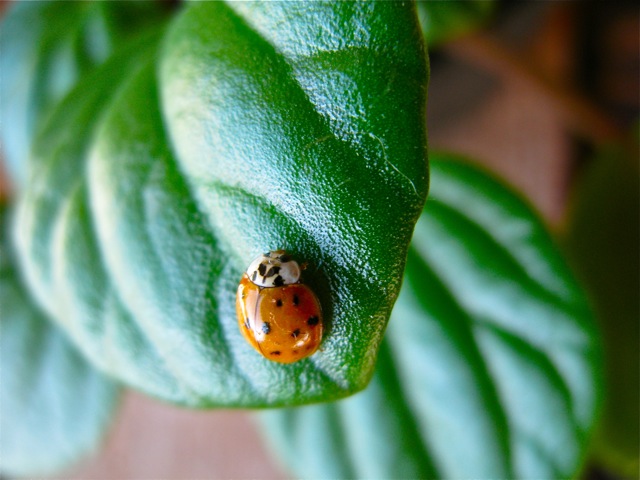
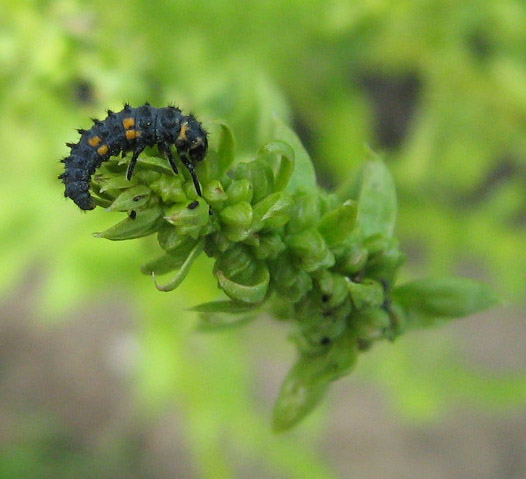
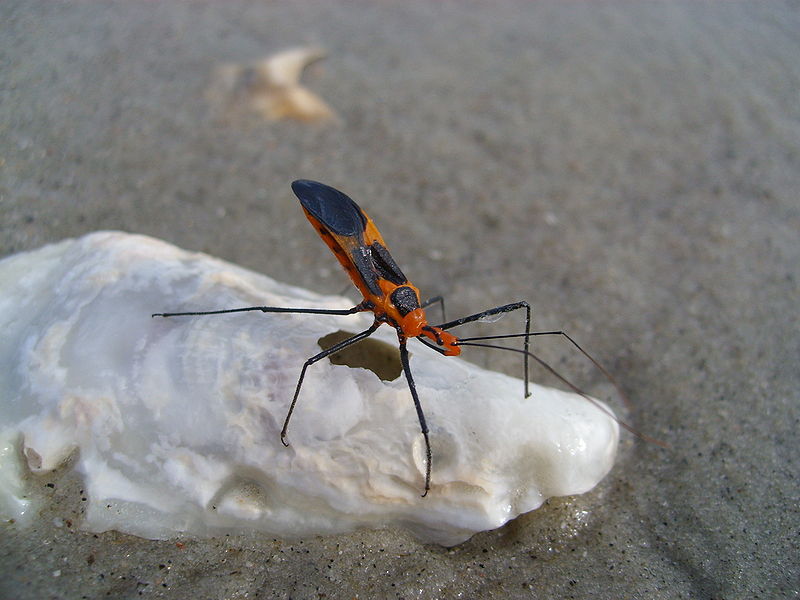
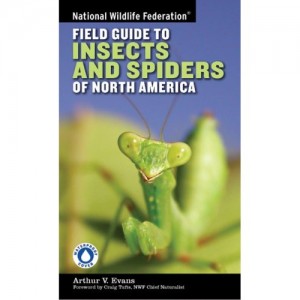
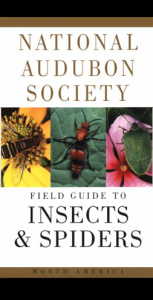

I LOVE dragonflies. My grandmother had a glass pitcher with dragonflies on it, and when I cleaned out my parents house, I was disappointed that it wasn’t there. Walter has a little table on the porch in the country that has a dragonfly cut-out in the middle, and I envisioned pitchers of lemonade on the porch – in the pitcher, on the table.
Of course, in reality we’re too busy to have lemonade on the porch (but not too busy to have gin and tonics at sunset). Nevertheless, you know what I mean…in a perfect world there WOULD be lemonade on the porch with chicken salad sandwiches and potato chips.
The ladybugs have lit all over our house upstate too. For me it means spring is coming – and if today is a harbinger, I’ll take it. A day without gloves is all I need to know that spring is coming.
P.S. xoxo
Moments ago, as I stepped through the back gate, an insect whizzed past my head. I realized, belatedly, that it was a honey bee; most likely from the small hive in my back yard. “The girls” I rescued from the ditch last September (long story) have made it through the winter and are happily doing bee stuff on a gorgeous spring morning!
Hello Victoria and Deb,
Victoria, I want the lemonade on the porch too. In fact, I want it poured from a dragonfly pitcher just like the one you describe. Hmm. What a great idea. Dragonflies are so cool. And you know what the gin and tonics reminds me of right now? Fireflies. FIREFLIES ! Soon they will be back. I know because…
Deb, you saw a bee. A BEE ! In March ! That is something else. Oh I am getting excited.
Thanks for stopping by!
xo Michaela
Oh dear, I didn’t mean to get your hopes up too much… It’s normal for bees to be flying about when the temperatures are warm enough in the winter: they have to take a cleansing flight every so often or they’ll get dysentery and die, you see.
But, that being said, it was definitely warm enough for more than just a short “potty run” away from the hive. That little girl on Wednesday was definitely on a breakaway! Bee well!